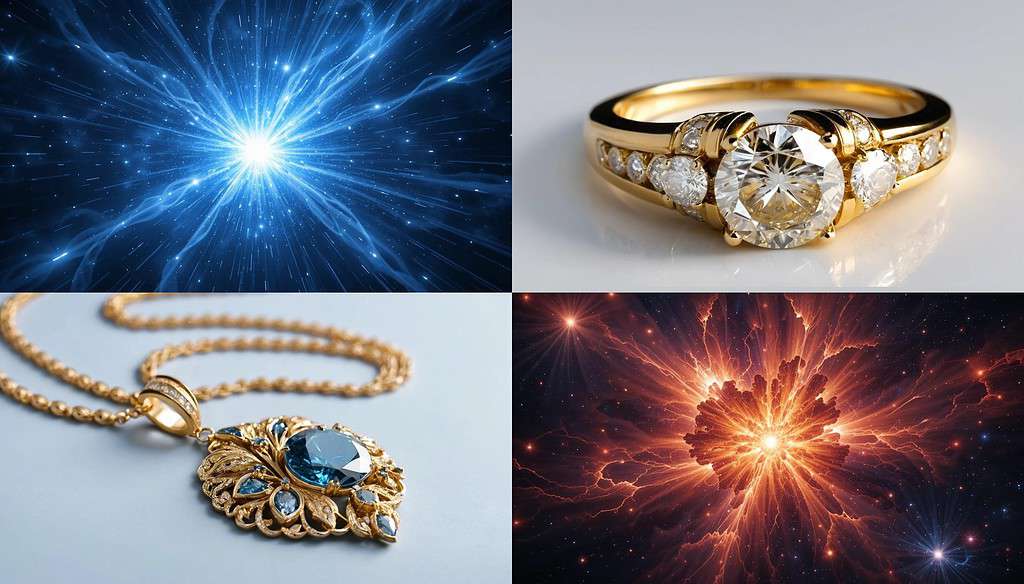Table of Contents
Supernova: Cosmic Origin of Precious Jewelry Metals
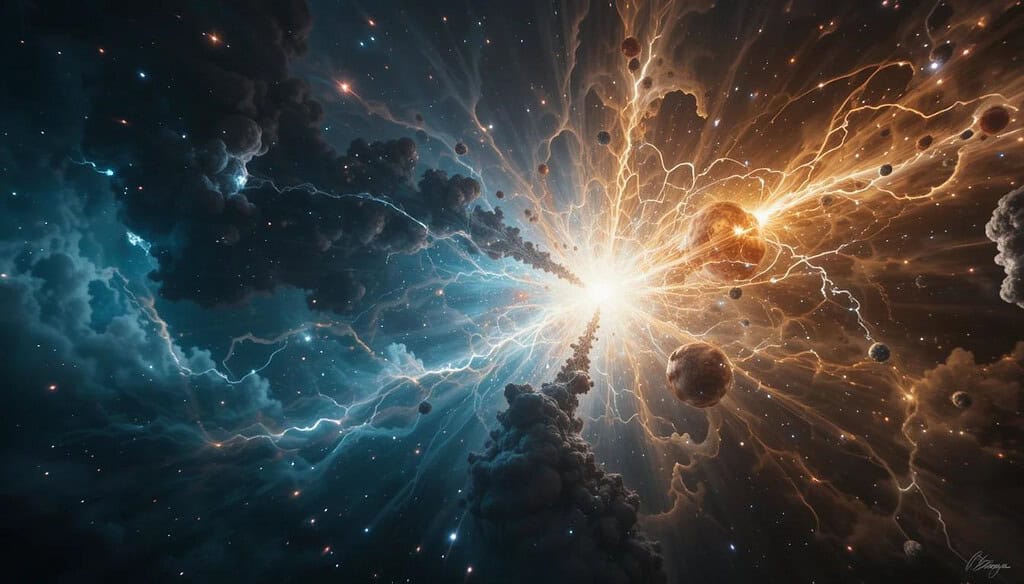
Imagine for a moment that the sparkling rings and necklaces you see in jewelry stores were born not in the hands of skilled artisans, but in the heart of a dying star. It may sound like the plot of a science fiction movie, but it’s true: many of the precious metals we treasure today were forged in the explosive chaos of supernova – one of the most destructive and powerful forces of the Universe. These powerful cosmic events, which occur when massive stars collapse and explode, create conditions so extreme that they can produce some of the rarest and most valuable elements in the universe.
So, how does something as distant and powerful as a supernova connect with the jewelry you wear? The process begins in the cores of massive stars. When these stars reach the end of their life cycles, they explode in supernova, releasing enormous amounts of energy. During this explosion, heavier elements like gold, platinum, and silver are created in a process known as the r-process, or rapid neutron capture. Essentially, the explosion’s heat and pressure force atoms to collide, creating new, heavier elements.
Once formed, these metals are scattered into space, where they eventually become part of dust clouds, asteroids, and planets—Earth included. Over billions of years, some of these precious metals found their way into the crust of our planet, where they were mined and refined by humans. The metals that once had a violent, cosmic birth now shine on our fingers, necks, and ears, transformed into pieces of art and symbols of wealth, love, and beauty.
Gold, silver, platinum, and others like palladium and rhodium have long been associated with luxury. But what makes them so special, beyond their rarity, is their connection to the universe. These metals weren’t just pulled from the Earth’s surface; they’ve traveled through space, surviving cataclysmic explosions and cosmic radiation before making their way into the jewelry industry. They carry with them a piece of the cosmos, reminding us that the same forces that shape galaxies and stars also shape the things we wear and cherish.
So next time you admire a piece of jewelry, remember—it’s not just a shiny adornment. It’s a tiny fragment of the universe itself, a gift from the stars that has traveled millions of light-years to be part of your world. Isn’t that a beautiful thought?
8 Heavenly Metals Forged in Supernova
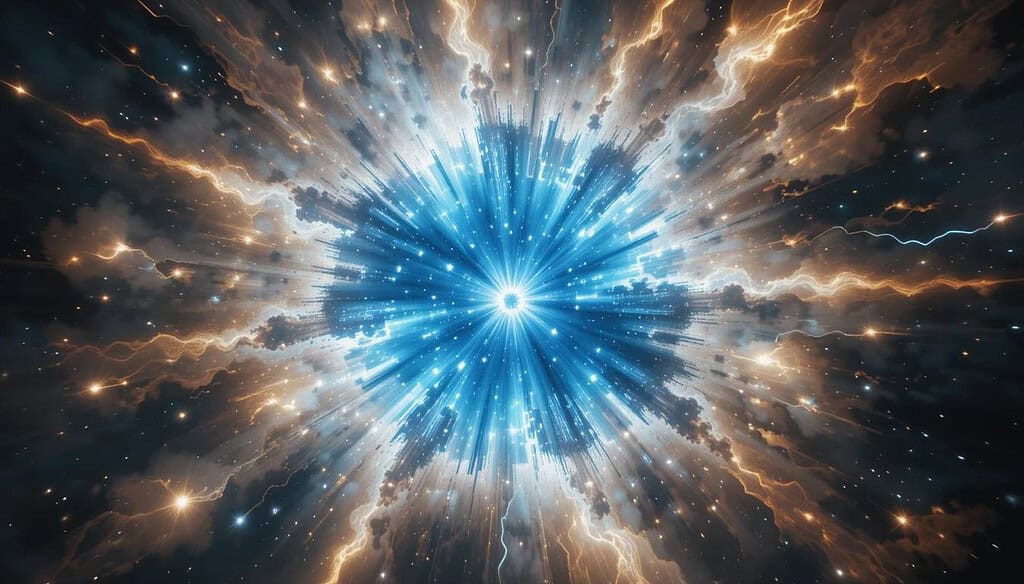
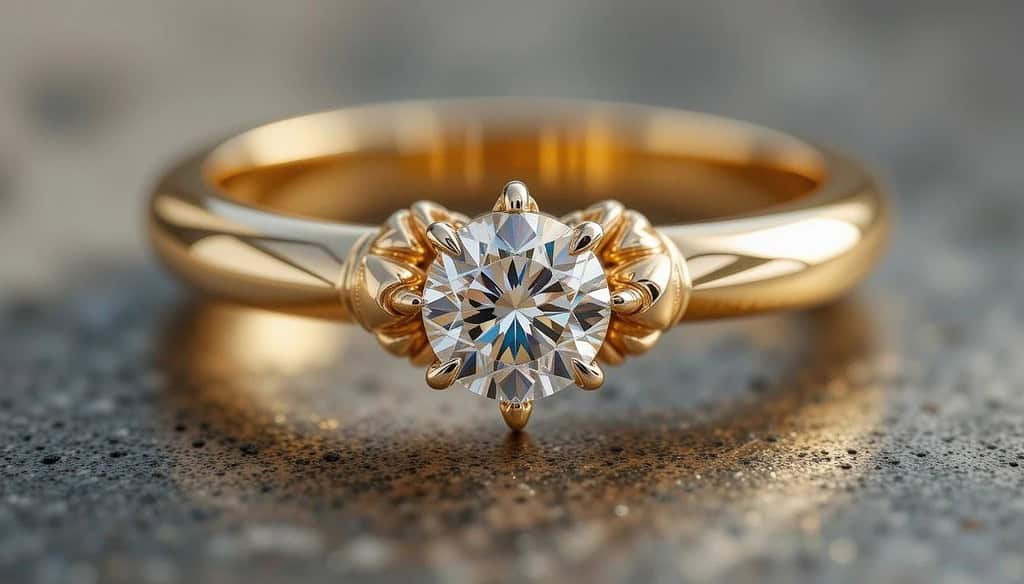
1. Gold (Au): The King of Jewelry
Gold has been a symbol of wealth and power for centuries, and for good reason. It’s bright, it’s beautiful, and it’s one of the rarest and most precious metals on Earth. But did you know that this iconic metal didn’t just show up on our planet by accident? Gold is formed in the extreme conditions of Supernova, where the death of a massive star creates the ideal environment for heavier elements like gold to form. The intense heat and pressure of a supernova explosion allow atoms to collide and fuse, producing elements far heavier than iron—gold being one of them.
Once formed, this golden treasure is scattered into space, only to find its way to planets like Earth. Over millions of years, through cosmic dust clouds and asteroid impacts, gold became part of the Earth’s crust, ready to be mined and refined. What makes gold so desirable isn’t just its cosmic birth; it’s its unparalleled beauty and malleability. Unlike other metals, gold doesn’t tarnish or rust, making it the perfect candidate for fine jewelry that lasts forever.
Gold has served as a material for jewelry for millennia. Historical societies esteemed it not only for its aesthetic appeal but also for its capacity to represent divine authority, affluence, and influence. Whether fashioned into a crown, a coin, or a ring, gold has consistently been associated with opulence. It has adorned the likes of monarchs and emperors, and it continues to be one of the most sought-after metals in contemporary jewelry design. From intricate wedding bands to bold necklaces, gold perpetually captivates our fascination.
What’s fascinating is that gold’s timeless appeal is rooted in the stars. Every piece of gold you wear has been through an epic cosmic journey, birthed in a supernova millions of years ago. It connects us to the universe, reminding us that our most cherished treasures are as ancient as the stars themselves.
2. Silver (Ag): A Timeless Classic
Silver, often seen as a more affordable alternative to gold, has a long history of its own. Known for its brilliant shine and versatility, silver has been used for everything from currency to jewelry for thousands of years. But just like gold, silver’s journey began far away—in the violent explosion of a supernova. When massive stars explode, creating the intense conditions of a supernova, elements like silver are formed in the aftermath of these cataclysmic events. These heavy elements are then scattered across the cosmos, eventually becoming part of the building blocks of planets, including Earth.
What makes silver so appealing is its natural beauty and shine. It has a brightness and reflective quality that makes it stand out in jewelry designs, whether it’s a simple bracelet or an intricate pendant. Silver is also far more abundant than gold, making it more accessible, but it still holds a sense of elegance and sophistication. Sterling silver, which is 92.5% pure silver mixed with another metal (usually copper), is one of the most common alloys used in fine jewelry today. Its durability and ability to take on high-polish finishes have made it a favorite among jewelry designers.
Throughout history, silver has been used for a wide range of items. In ancient times, it was often associated with the moon, a celestial body that has its own connection to the stars. Cultures across the world have used silver not only in coins but also in sacred items, thinking of it as a metal with spiritual significance. The ancient Egyptians, for example, crafted silver jewelry as offerings to their gods, and even today, silver is worn to mark significant life events, from weddings to birthdays.
Silver also has a practical side. Its excellent conductivity makes it a choice for electronics, and its malleability makes it easy to mold into various designs. But no matter how it’s used, its cosmic origins in the supernova remain unchanged. Each piece of silver, whether a delicate ring or a statement necklace, is part of a story that stretches back to the stars. It reminds us that even the simplest things we wear can have extraordinary beginnings.
3. Platinum (Pt): The Rare and Resilient Metal
Platinum is a metal that’s often seen as the pinnacle of luxury. It’s rarer than gold, denser, and has a natural white luster that makes it a favorite for high-end jewelry, particularly engagement rings and wedding bands. But like gold and silver, platinum’s existence is deeply tied to the cosmos. Formed in the extreme temperatures and pressures of supernova explosions, platinum is another metal that owes its existence to the violent death of a star. These Supernova not only create the building blocks for platinum but also set the stage for the formation of other rare metals, making platinum one of the most coveted elements on Earth.
Platinum’s rarity is one of the main reasons why it’s so highly valued. It’s estimated that all the platinum mined in history would fit into a small swimming pool, which gives you an idea of just how rare this metal is. Despite its scarcity, platinum’s properties make it ideal for use in jewelry. It’s incredibly durable, resists tarnishing, and doesn’t corrode, making it a perfect choice for pieces that need to stand the test of time, like engagement rings. Platinum also has a high melting point, which makes it difficult to work with, but its strength and resilience make it one of the most desirable metals for fine jewelry.
For centuries, platinum was reserved for kings and royalty. In the 18th and 19th centuries, it was often used for items like crowns and decorative pieces. Today, platinum is prized for its use in everything from high-end rings to luxury watches. Jewelry designers love its weighty feel and the way it enhances diamonds and other precious gemstones, making them appear even more brilliant.
Just like gold and silver, platinum’s connection to the supernova is a testament to the metal’s cosmic origins. It wasn’t just pulled from the Earth’s crust; it was formed in the explosive aftermath of a star’s death. And just as a supernova’s energy transforms the metals within it, platinum’s journey through space and time has made it one of the most enduring and valuable elements used in jewelry today.
4. Palladium (Pd): The Lightweight Luxury
Palladium may not be the first metal that pops into your head when considering fine jewelry, but it’s rapidly gaining popularity, especially among those seeking a lighter and more budget-friendly alternative to platinum or gold. Often dubbed a “lightweight luxury” metal, its origins are fascinating. Like other precious metals, palladium is born from the explosive aftermath of a supernova. These cosmic events create heavier elements, and palladium is one of them. When massive stars reach the end of their life cycles and explode, they scatter metals like palladium throughout the universe, eventually incorporating them into planets like Earth.
What sets palladium apart from metals like gold or platinum is its relatively lightweight, which is a significant attraction in the jewelry industry. Its silvery-white luster makes it an excellent choice for crafting beautiful engagement rings, wedding bands, and other fine jewelry pieces that require a combination of delicacy and durability. A standout characteristic of palladium is its resistance to tarnishing, making it a fantastic option for everyday wear.
Additionally, it’s hypoallergenic, making it suitable for those with sensitive skin. As a member of the platinum group of metals, palladium shares many of platinum’s desirable traits, such as corrosion resistance and the ability to retain its stunning shine over time. However, it often comes at a more affordable price, making it a great choice for those seeking luxury without breaking the bank.
The journey of palladium from supernova to jewelry is a testament to its resilience. It’s not just a pretty metal; it’s strong and flexible enough to withstand the test of time. In fact, palladium is becoming more and more popular in fine jewelry as people look for sustainable, long-lasting materials that are still luxurious. And, like the other metals formed in Supernova, palladium carries with it the history of stars that lived and died millions of years ago, making it more than just a metal—it’s a piece of the universe.
5. Rhodium (Rh): The Shining Protector
Rhodium is one of those metals that doesn’t get a lot of attention on its own, but it plays a crucial role in making jewelry even more stunning. It’s known for its bright, reflective shine, and it’s often used as a plating for other precious metals, such as gold or silver, to give them a brilliant white finish. Rhodium is one of the rarest metals on Earth, and its origin is tied directly to the violent explosions of Supernova.
Like palladium and platinum, rhodium was created in the explosive remnants of dying stars, where intense heat and pressure forced atoms to fuse and create elements heavier than iron. These heavy elements, including rhodium, were scattered throughout the cosmos, eventually becoming part of the materials that formed the Earth.
One of the reasons rhodium is so valuable and sought after in the jewelry industry is because of its incredible ability to resist tarnishing. When it’s used to plate jewelry, it gives the piece a shiny, reflective surface that doesn’t fade or wear off easily. This makes it perfect for pieces like engagement rings and necklaces, where you want that mirror-like finish to last for years. In addition to its shine, rhodium is also highly resistant to corrosion, which makes it a durable choice for jewelry that gets a lot of use.
Rhodium’s role in jewelry goes beyond just plating, though. It’s also used in automotive industries, catalytic converters, and even in some high-tech devices, thanks to its incredible properties. But when it comes to jewelry, its supernova origins and brilliant shine are what make it particularly special. Every time you see a piece of jewelry with that stunning, shiny coating, remember: it’s the result of a metal formed in a supernova, a tiny piece of the stars themselves.
While rhodium is incredibly rare, its use in jewelry plating means that it’s accessible to those who want to add a little extra sparkle to their pieces without breaking the bank. It’s a subtle but important part of the jewelry-making process, making sure that the metals underneath it stay shining bright for as long as possible. Rhodium may not be the centerpiece of a ring or necklace, but without it, jewelry wouldn’t quite have the same level of brilliance.
6. Iridium (Ir): The Ultra-Durable Metal
If there’s one word that sums up iridium, it’s durability. Iridium is one of the most durable metals on the planet, and its origins are just as tough. Formed in the extreme conditions of supernova, iridium is a metal that can withstand almost anything—heat, corrosion, and even intense pressure. It’s incredibly rare, too, with only small amounts of it found in Earth’s crust. Yet, despite its scarcity, iridium has become a sought-after material in various industries, including jewelry.
Iridium’s remarkable properties stem from the same supernova explosion that gave birth to many other precious metals. When massive stars explode in a supernova, they create elements that are heavier than iron, including iridium. This process is what allows iridium to be one of the densest and most durable metals known to man. In fact, it’s so tough that it’s used in the manufacturing of items that require extreme strength, such as high-performance electrical contacts, spark plugs, and even satellite components. But its durability isn’t just what makes it special—it’s also its unique white-gold appearance, which gives jewelry pieces a stunning, glossy finish.
Because iridium is so strong, it’s often used in small amounts to alloy with other metals, like platinum, to increase their hardness and resistance to wear. This makes iridium an ideal choice for creating jewelry that needs to withstand daily use. Engagement rings, wedding bands, and other fine jewelry pieces that need to hold up to years of wear benefit from iridium’s toughness. Iridium’s ability to resist tarnishing and scratching also makes it a long-lasting option for people who want a piece of jewelry that will look just as beautiful decades down the road.
The journey of iridium, like palladium and rhodium, is deeply tied to the universe. It didn’t come from Earth’s crust or even the core of our planet; it was created in the explosive aftermath of a dying star’s supernova. This cosmic origin gives iridium a kind of timelessness, making it not just a durable metal, but a rare treasure that carries the history of the stars with it. So, when you wear a piece of jewelry containing iridium, you’re not just wearing a beautiful piece of craftsmanship—you’re wearing a metal that’s survived the harshest conditions the universe has to offer.
7. Osmium (Os): The Dense Beauty
Osmium isn’t a metal that you hear about every day, but it’s one of the most fascinating elements to come from a supernova explosion. This metal is dense—so dense that it’s often described as one of the heaviest naturally occurring elements. Osmium’s unusual weight is one of the main reasons it’s caught the attention of jewelers and collectors, though it’s not commonly used in its pure form. While it’s incredibly rare on Earth, it’s thought to have been formed in the aftermath of a supernova, where it was created under the intense pressure and heat that only such stellar explosions can provide.
When a star explodes in a supernova, it can create elements heavier than iron, and osmium is one of those rare heavy metals. It’s formed in the chaos of the explosion, where atoms are pushed to their limits and fuse to create these dense elements. Once scattered through space, osmium eventually became part of the mix of materials that formed our planet. While it’s much rarer than other precious metals, osmium’s place in the jewelry industry is growing, especially when it’s used in alloyed forms with platinum or iridium to create unique, ultra-durable pieces.
What makes osmium so special, aside from its incredible density, is its striking appearance. It has a bluish tint that makes it stand out in a collection of metals, and its lustrous, almost shiny finish gives it a unique elegance. Osmium’s dense nature also makes it an ideal metal for crafting intricate, detailed designs that need a strong base. It’s particularly useful in watchmaking, where its toughness and ability to retain shape are highly valued. Although osmium is not often seen in mass-market jewelry, its rarity and distinctive properties make it a coveted metal for high-end, specialized jewelry designs.
This metal’s connection to supernova adds another layer of fascination to its allure. Osmium didn’t just come from Earth’s crust like many other metals; it was formed in the explosive death of a star. Every piece of osmium carries with it a story of cosmic birth, making it more than just a beautiful metal. It’s a fragment of a stellar event that happened millions of years ago, and wearing it is like holding a tiny piece of the universe in your hand.
8. Ruthenium (Ru): Enhancing Durability
Ruthenium might not be as well-known as gold or silver, but its role in the jewelry industry is just as important. Known for enhancing the durability of other metals, ruthenium is often used as a coating or alloying metal in jewelry, particularly to add strength and a bit of extra shine. Like many other precious metals, ruthenium was formed in the fiery aftermath of a supernova. These stellar explosions created the extreme conditions necessary to produce elements heavier than iron, and ruthenium is one of those rare metals that resulted from the death of a massive star.
Once created in the supernova explosion, ruthenium’s journey to Earth was much like that of other metals. It was scattered throughout space and became part of the dust and gas that eventually formed the planet. Ruthenium, though not as abundant as some of the more famous metals, is highly valued for its ability to improve the properties of other metals, particularly platinum. When alloyed with platinum, ruthenium increases the metal’s strength and resistance to wear, which is why it’s often used in high-end jewelry, especially in rings, bracelets, and watches that need to stand up to daily wear.
What makes ruthenium so valuable is its versatility. It can be used to create coatings on jewelry, giving pieces a more polished, shiny finish while also protecting them from scratches and tarnish. It’s often used in the automotive industry as well, as it has excellent corrosion resistance. In the jewelry world, ruthenium’s primary function is to improve the durability and longevity of other metals, making it a perfect addition to platinum, gold, and silver alloys.
The metal’s connection to supernova adds another layer of intrigue. Like osmium, ruthenium is part of a family of metals that were created in the heart of a dying star. The energy and heat from the supernova explosion fused atoms and created elements like ruthenium, which eventually found its way into the Earth’s crust. Every piece of jewelry containing ruthenium carries with it a bit of that cosmic history, a reminder that our most cherished treasures were once part of a much bigger story.
What’s fascinating about ruthenium is that, despite being a relatively lesser-known metal, it’s integral to the durability of some of the finest jewelry out there. It’s often the unsung hero of jewelry design, quietly enhancing the beauty and longevity of other precious metals while adding a bit of shine and strength. Thanks to its origins in the supernova, ruthenium can also be seen as a connection to the farthest reaches of space, a star-born metal that helps protect the pieces we hold dear.
Just like osmium, ruthenium’s story is a cosmic one. Its existence is tied to the explosive death of a star, and it’s this origin that gives it a unique place in both the jewelry industry and the broader world of precious metals. Ruthenium may not be as flashy as gold or platinum, but it’s a durable, versatile metal that holds its own in the world of luxury adornments. Whether enhancing the durability of a platinum ring or adding a sleek finish to a silver bracelet, ruthenium plays a key role in making jewelry that lasts—and shines—over time.
Supernova to Sparkles: How These Metals Transform into Jewelry

The journey from the fiery explosion of a supernova to the shimmering jewelry pieces we wear today is nothing short of extraordinary. It all begins in the depths of space, where a massive star reaches the end of its life and explodes in a supernova. These explosions are so intense that they produce elements heavier than iron, including the precious metals we find in jewelry today. These metals, scattered across the cosmos, eventually made their way to Earth, where they were mined, refined, and transformed into the fine jewelry we cherish.
Once these metals have landed on Earth, the real work begins. The extraction process for metals like gold, platinum, and palladium can be complex. Miners dig deep into the earth or even go under the ocean to find these metals in their natural forms, sometimes mixed with other elements. This is where the magic of refining happens—through a combination of heat, chemicals, and skill, these metals are separated from the ores and impurities that surround them, leaving only the pure precious metals behind. This refining process is crucial because it ensures that the metals we wear are both beautiful and durable, ready to be transformed into stunning pieces of jewelry.
Jewelers then take over, using their artistry to craft these metals into exquisite rings, necklaces, bracelets, and more. The techniques they use vary depending on the metal’s properties. For example, gold is malleable, making it perfect for intricate designs, while platinum is denser and more durable, ideal for setting stones securely. Metals like palladium and rhodium, with their exceptional tarnish resistance, are often used to coat or alloy other metals, giving them a brilliant shine that lasts for years. The unique hardness of metals like iridium and osmium means they’re perfect for creating jewelry that stands up to daily wear and tear, while also offering a unique aesthetic that’s hard to beat.
One of the most important aspects of these supernova-born metals is how their properties influence their use in jewelry. For instance, the tarnish resistance of rhodium or the durability of platinum ensures that these metals will keep their beauty over time, even with daily use. Jewelers take these qualities into account when crafting each piece, knowing that they are working with metals that have been forged in the heart of stars. From the heat of the supernova to the skill of the jeweler, these metals are transformed into timeless treasures that carry the story of the universe itself.
Supernova: Celestial Legacy of Precious Jewelry Metals
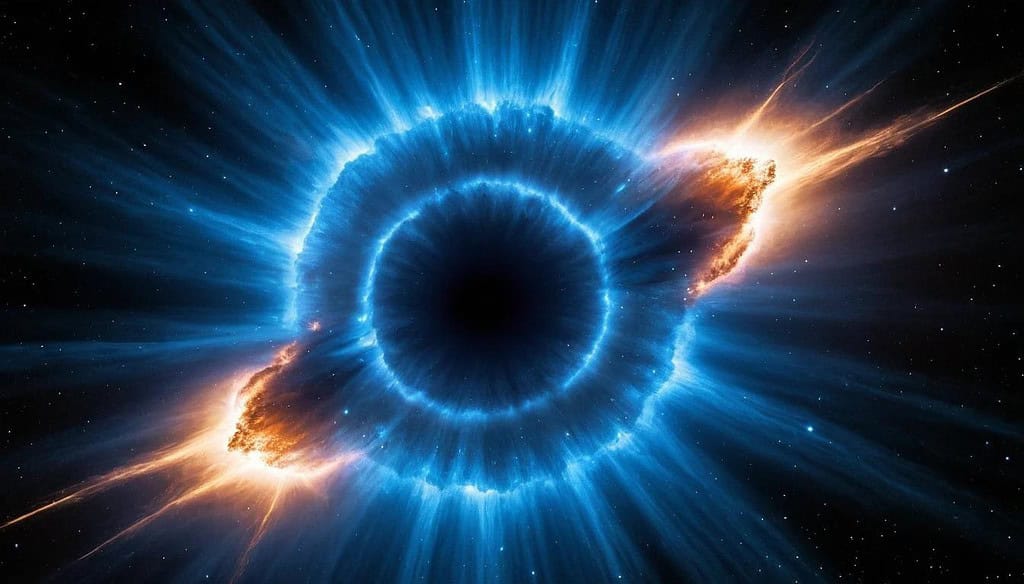
The journey of these precious metals, from their birth in the explosive chaos of a supernova to their transformation into luxury jewelry, is nothing short of awe-inspiring. When we wear a piece of gold, platinum, or silver, we’re not just adorning ourselves with something beautiful—we’re wearing a piece of the universe itself. These metals, formed from the intense energy and pressure of dying stars, have traveled across time and space to reach us. Their cosmic origins make them even more special, adding layers of meaning to the sparkling rings, necklaces, and bracelets that we wear today.
Each of these metals carries with it the history of a supernova explosion—an event that happened millions of years ago, where massive stars died in fiery bursts, creating elements that would eventually find their way to Earth. From the moment these metals were formed in the heart of those stars, they were destined to become part of something much greater. And when they are mined, refined, and crafted into jewelry, they take on new meaning and purpose, connecting us to the cosmos in ways we might never have imagined.
It’s fascinating to think that the jewelry we wear today—pieces passed down through generations, gifts from loved ones, or treasures we’ve saved for ourselves—could have such deep, celestial roots. Gold, silver, platinum, and the other metals formed in Supernova have characteristics that make them perfect for creating long-lasting, beautiful ornaments. Their resistance to tarnishing, their brilliance, and their rarity make them the ideal materials for fine jewelry, and their connection to the universe adds an almost magical quality to their beauty.
As we continue to create and appreciate jewelry, we’re not just crafting or admiring shiny objects—we’re honoring a celestial legacy. The supernova explosions that gave birth to these metals remind us of the vastness of the universe, and how even the most extraordinary and far-off events can have a direct impact on our everyday lives.
Every piece of jewelry, every gemstone, and every precious metal we wear connects us to something much larger than ourselves. It’s a reminder that, in a way, we’re all stardust, and the treasures we wear are part of that grand cosmic story. So, the next time you gaze at a sparkling piece of jewelry, remember: it’s not just beautiful—it’s a piece of the cosmos itself.
Disclaimers: *This article is only for informational purposes.
**Do not make your important decisions solely based on the information provided in this article. Do your own research.
***Information in this article may vary or get updated in the future.
Read More Science and Space Articles
- Stars to Life: 8 Incredible Ways Stars Define Us
- 8 Remarkable Ways Kumquat Shines in Culture and Cuisine
- Beautiful Art of Gravity: 8 Ways It Shapes Our Daily Lives
- Big Bang: 8 Explosive Steps to Derive The Recipe of Cosmos
- 8 Amazing Lime Tales: Ancient Groves to Modern Kitchens
- 8 Weird Ways Grapefruit Can Interfere with Medications
- Pomelo in Culture: 8 Heartwarming Ritual Traditions
- 8 Culinary Uses of Oranges That I Highly Recommend
- 8 Astounding Ways Lemons Have Helped Elevate My Mood
- 8 Irresistible Ericaceae Fruits (Heath Family) to Savor and Enjoy
- 8 Incredible and Healthy Cucurbitaceae Fruits to Enjoy
- Top 8 Delicious Anacardiaceae Fruits You Must Try
- 8 Incredible Musaceae Fruits You Need to Try Right Now
- 8 Incredible Vitaceae Fruits: Nature’s Tasty Treasures
- 8 Incredible Rosaceae Fruits You Need to Discover
- Discover 8 Fruit Families That Enrich Our Daily Diets
- 8 Non-CO₂ Greenhouse Gasses That Are Worst Than CO₂
- 8 Ways Water Crisis is Worsened by Global Climate Change
- 8 Amazing Ways Brain Anatomy is Altered by New Learning
- 8 Disastrous Ways Deforestation Destroys Biodiversity
- 8 Worst Ways Global Climate Change Hurts The Impoverished
- Danger Of Environmental Damage: 8 Ways A Person Can Help
- Eradication Of Poverty: 8 Critical Ways Science Helps
- Mathematics: 8 Interesting Ways To Become Efficient At It
- STEM Fields: 8 Important Reasons Why You Must Learn Them
- Making Your Kid Efficient At STEM Subjects: 8 Important Steps
- Becoming A NASA Aspirant: 8 Important Steps You Must Follow
- Discoveries by JWST: 10 Incredible Findings of The Telescope
- NASA’s MOXIE Creates O2: Big Step Towards Mars Colonization
- Space Science: 6 Vital Reasons Why We Should Invest in It
- Solar System: 10 Astonishing Uniqueness of our star system

